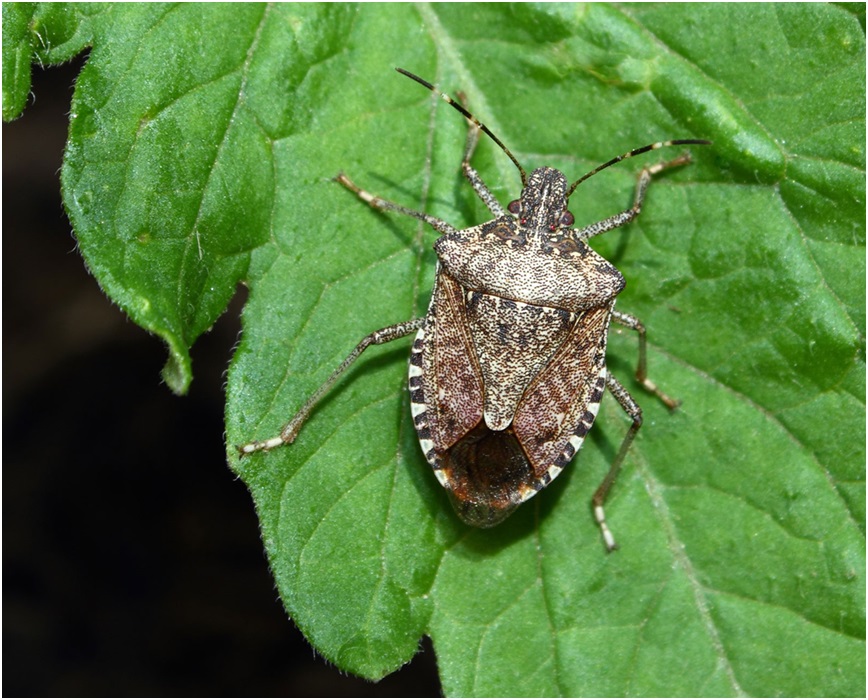Stink Bugs Alert! Ways to Fend Off These Stinking Pests

Do you still remember the invasion of insects in the late summer of 2019? According to experts, the sudden outbursts of the insects were attributed to various factors such as the season, weather, environment, etc. Gnats, grasshoppers, crickets, and stink bugs were flying everywhere.
It so happened you were in your car and witnessed this horrific scene. Your eyes were caught by those brown bugs with shield-like backs, also known as stink bugs—wondering why they are named so? Aside from joining the crowd of invasion of the other insects, how do they affect you? What do you need to do in case they come again?
What are stink bugs?
Stink bugs are indigenous to Asia. They accidentally made their way in North America in the 1990s by stowing in the crates, transported machinery or vehicles. Their population has been on a steady rise since then. They are currently detected in more than 45 states in the US, including Southern Utah.
Stink bugs’ name is based on the “stinky” chemical or pheromone they release as a defense mechanism against their natural predators. They also use this odor to signal other stink bugs that they finally found an overwintering spot. They are six-legged insects with a back that has a triangular or shield shape. They are about three-quarters to an inch in length. They have antennae, six legs, and a pair of wings that seemed to be hidden. Their mouths are thin and pointed, which they used for sucking their source of nourishment. Their colors vary from brown, gray, and green.
Among the stink bugs in Southern Utah, the Brown Marmorated Stink Bug is the plant-feeding stink bug that is considered invasive. As the name suggests, its color is marbled grayish brown.
Stink bugs are unlike ants and termites that are members of a colony. Although they can live solo, they do not mind assembling another stink bug for shelter and food.
These insects will not bite, sting, or wound anyone. However, they are certainly damaging to any crops and plants of the farmers or gardeners. Furthermore, what is harmful to them is the putrid odor they emit if you raise a hand against them. Pretty sure you would not like what you will smell if these small insects spread that kind of annoying “unique” scent.
What are the signs of stink bug infestation?
A pest infestation happens because these living organisms fight for survival. Hence, they require sufficient food, a fitting climate and temperature, and suitable habitat.
Stink bugs are invasive agricultural pests among plant-eating stink bugs. They are fond of ornamental trees and shrubs, seeds, nuts, fruit, and vegetable crops in your farm, field, garden, or orchard.
They also thrive in warm sunny climates and hibernate in cold winter seasons. The stink bug swarm in 2019 shows us how the temperature affects the activity of these insects. In spring, stink bugs are active to the point that they reproduce more offspring and feed on plants and crops. Changes in the climate are an attribute of their procreation.
In late summer to fall, you will find these pesky bugs in the sides of your residence or establishment, but they will also be looking for a way to enter your premises through holes, cracks, or any crevices. Come winter, these bugs enter a state of hibernation called “diapause.” They do not reproduce nor feed during this season. They overwinter under boards, ground, rocks, and weeds. Then the cycle repeats itself.
How to prevent stink bug infestation?
If you find a horde of stink bugs in your home, building, garden, or farm, you will need the help of professional pest control to eliminate them. Avoid taking pest control into your own hands. You may be thinking of sorting your stink bug problem by spraying pesticides inside your home or business. However, it may do more harm than good to you or your family members, including children, older adults, and pets. Professionals will not only inspect your entire property for these pests but also find out the source of infestation. They will also determine and assess the seriousness of your pest problem.
After they are done with the elimination, it is crucial to control and manage possible habitation in your property to prevent any further stink bug infestation. Controlling stink bugs includes the following methods.
- Seal any exterior openings around your house or building. You can use caulk to shut cracks, crevices, or holes.
- Replace or repair any damaged screen on doors and windows.
- Apply weather stripping to seal gaps under exterior doors.
- Cover any vents in attics and crawl spaces.
- Handpick stink bugs early in the morning.
- Keep your grass low.
- Eliminate weeds on your lawn.
- Store your food correctly. Avoid wastage or spills, so it will not attract pests.
- Vacuum or sweep any stink bug you see and throw them away immediately.
- Turn off outdoor lights if not in use. If not, you can turn the lights dim or to a minimum.
As a word of caution, if you ever see even one stink bug, think before you squish. The notoriety of this insect’s scent certainly lived up to its name.